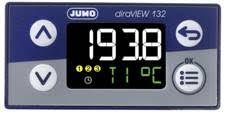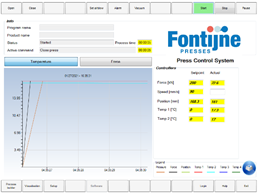May 31, 2021
In our previous blog, we have discussed the several factors you have to take into consideration when purchasing a new platen press. Operation of the press is one of these important aspects, and having preset features and setting options ensures efficiency and higher throughput of the handling and analysis of samples. In this week’s blog, we would like to follow up on the differences between a manually operated and an automated press. Both of them have their advantages and aspects that impact the operation and the results required with such presses.
First of all, it is important to know that we build our manually operated lab presses following the same severe standards as for building the automated presses, with the same materials, always with safety in mind, and coming with the CE certificate.
The process you want to perform and the required output of specimens are decisive for your choice between a manually operated press and an automated press.
Heating up and cooling down samples
In case you only need to heat your product to a certain temperature and apply a certain pressure without further specifications, you can use a manual press. But in case the heating rate plays a role or you would like to work with ramps, you have to choose the automated presses where you can work with a programmable multiple-stage recipe.
For example: if you want to heat from ambient temperature up to 200°C, this is no problem for our manually operated presses. But if you need to heat up with e.g. 10°C/min you should choose the automated lab presses.

Manually operated interface
Although it is possible to cool down with water on our LabManual 300, please be aware of the fact that this way of cooling is uncontrolled: you open a valve manually and the water simply runs through the cooling channels inside the heating platens. Controlled cooling with a certain rate or following linear ramps is not possible.
For example: if you want to cool down the press to ambient temperature before leaving the lab or if you want to cool down from a certain high temperature to start a new test at a lower temperature, this can be realised by manually uncontrolled cooling on our LabManual 300. But if you want to cool down with e.g. 10°C per minute, or with 15°C+/-2°C /min. according to ASTM D4703, you should opt for an automated lab press.
Closing force
When working with a hydraulic system, it is obvious that there is a small loss of closing force after a certain period of time. With the automated lab presses, such a loss is immediately detected and the control will take care that the setpoint is reached again and will be maintained. With the manually operated press, this loss of closing force is not automatically monitored. In case a stable closing force for a long time is key, the operator has to check the actual closing force on the digital display regularly, and if necessary adjust the closing force by pumping manually.
Indeed on a manually operated lab press the closing force is applied manually by using the pump handle until the desired pressure is obtained or until the maximum pressure is reached. When working with an automated press you only have to push a button to start the recipe according to which the press has to work and the control systems ensure that all setpoints are automatically reached. Exact repeatability and data readout through a USB interface are only possible with automated lab presses.

Automated operated interface
Throughput need
Consequently, an automated press is the best choice if you require a bigger output. But in situations where the number of samples that need to be pressed is limited, the manually operated lab presses can be used instead, at a significantly reduced cost. They are also often used as a secondary or backup press, allowing to run a limited number of extra tests in addition to the production of the ‘normal’ samples that are handled by an automated press.
Another application that the manual presses are particularly suitable for, is for pressing fragile sample materials – such as glass –, or materials for which the pressing force must be built up very carefully.
